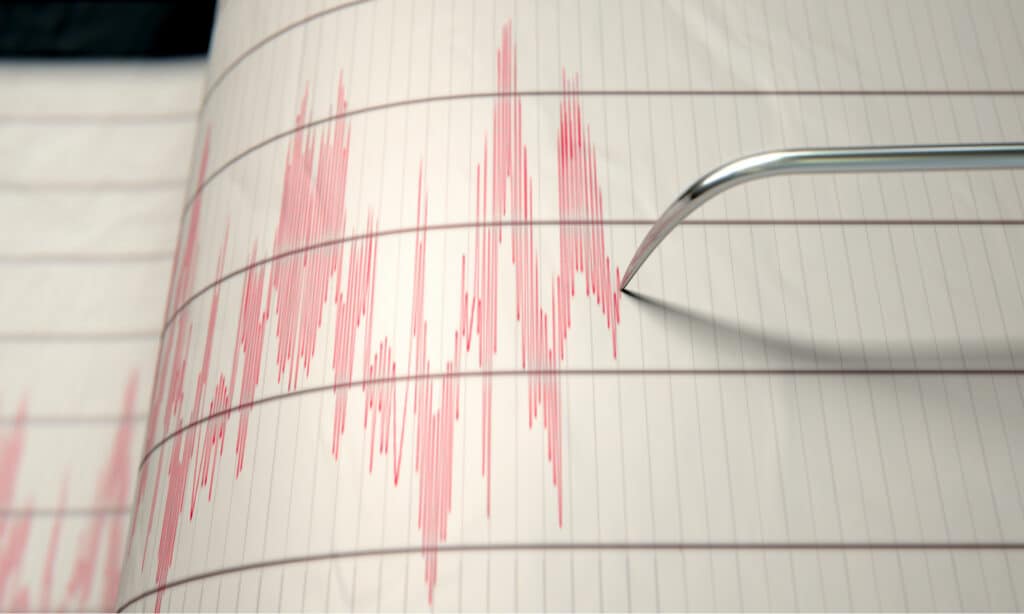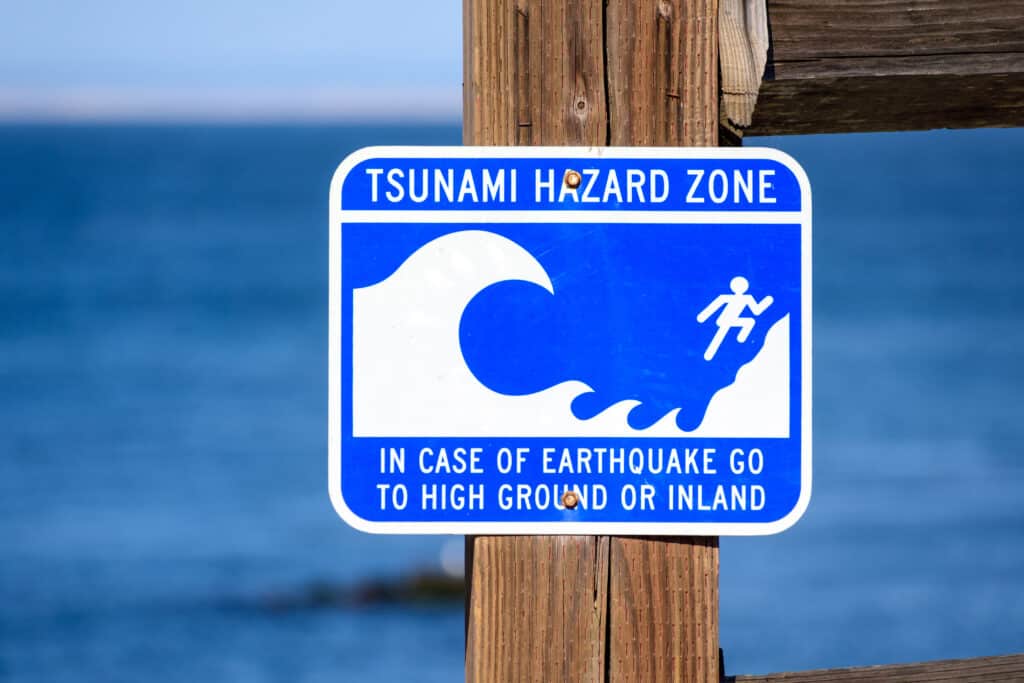Earthquakes have been shaking things up in Alaska since time immemorial. According to specific devices that sense tectonic movement, Alaska may have a minor earthquake every ten minutes. In fact, Alaska has an average of 1,000 earthquakes a month. And, while official statistics range from 12,000 to a staggering 50,000 annually, clearly, the ground is almost always shaking in Alaska.
Earthquakes come in different scales, and scientists and researchers grade them on a scale of one to ten, where a level-one earthquake is barely a rumble, and level 10 earthquakes can split the earth, swallowing up people and property.
How does Alaska deal with these earthquakes? They employ special architectural tactics to make their buildings withstand deep earth rumbles. In the event of a quake, they do not have to start afresh; they simply rearrange and repair. This doesn’t, however, mean that these earthquakes do not deal any damage.
These are the largest earthquakes Alaska has ever seen, along with their dates and fatality rates.
Largest Earthquakes in Alaska
Alaska is relatively quake-proof, so even a level 6 earthquake may not seem like a big deal there. Thus, the following earthquakes are level 7 and above. The letter “M” in parentheses stands for “magnitude.”
The Great Alaska Earthquake of 1964 (M9.2)
The Great Alaska Earthquake of 1964, also called the Good Friday Earthquake, happened on March 27, 1964. The earthquake lasted four minutes and 36 seconds, but that was enough time to claim the lives of 131 locals. This earthquake is the most powerful earthquake the United States has ever seen, and it ranks high on the list of the world’s most damaging earthquakes. The Great Alaska Earthquake of 1964 is second only to the …
This earthquake didn’t come alone. Alaska also saw a tsunami during that same period. Worse still, the quake caused an underwater landslide in Prince William Sound, Port Valdez. This landslide damaged the harbor and the 32 people who were either working on the docks or aboard an anchored ship drowned. The tsunami alone killed 23 residents; only 45 people escaped from the wave.
Knik Arm, which lies between Point Woronzof and Fish Creek experienced the most damage. The earthquake itself didn’t cause many casualties. Only nine people died from the earthquake. The remaining 122 casualties were due to the tsunami the earthquake caused.
1965 Rat Islands Earthquake (M8.7)
On February 4, 1965, barely a year after the Great Alaska Earthquake, Alaska experienced another great earthquake, this time at the Rat Islands. The pattern of the quake was oddly similar to the previous year’s. Judging from recorded vibrations, the earthquake started deep below. The vibrations first moved southwards, then westwards, along the Aleutic arc, before rupturing.
The Rat Island megathrust earthquake started when the Pacific tectonic plate moved under the North American plate, in the western region of the Aleutic islands. This earthquake rated 8.7, caused a 10.7m tall tsunami.
As severe as this earthquake was, there were no casualties. However, properties worth $10,000 suffered damage. The earthquake from the previous year must have taught Alaskan to be ever-ready, and this extends beyond simply earthquake-proofing houses.

Seismographs measure the intensities and duration of earthquakes and aftershocks.
©Inked Pixels/Shutterstock.com
1957 Andreanof Island (M8.6)
Alaskan earthquakes aren’t a new thing. Even before the record-breaking earthquake in 1964, Alaska witnessed frequent, severe earthquakes.
This particular earthquake that happened on March 9, 1957, started when the North American tectonic plates crashed with the Pacific plate, yet again. At the boundaries of these great tectonic plates, we have a subduction zone that is about 4,000km deep. This trench is called the Aleutian Subduction Zone.
Because these earthquakes happened pretty early in Alaska’s earthquake history, they could not accurately assess the quake’s behavior. Luckily, the earthquake claimed no lives, even though valuable property was destroyed.
This disaster dealt some damage to Alaska’s infrastructure, claiming roads, bridges, buildings, and even fuel stores.
2021 Chignik Earthquake (M8.2)
On July 28, 2021, an earthquake with a moment magnitude of 8.2 tore through Chignik Island. A few moments later, locals experienced three more earthquakes. According to the United States Geographical Survey, the first wave was the only actual earthquake. The vibrations that came after were simply aftershocks of the first, rated at 5.9, 6.1, and 6.9 Moment magnitudes (Mw) each.
This earthquake ranks 7th on the list of the most severe earthquakes the United States has seen. Despite that, no one died during the natural disaster. We have Alaska’s sparse population to thank for that. Also, because the earthquake happened offshore, it caused less damage than if it had occurred on land. During the waking moments of the quake, the National Oceanic and Atmospheric Administration sent out a tsunami warning. Thankfully, the warning was rescinded; a tsunami appearance was unlikely because the quake was far below the seafloor (32km). Had it been closer, it would have displaced more water, increasing the chances of a tsunami.

Signs like this indicate that people should immediately go to higher ground in the event of an earthquake, which could lead to a tsunami.
©Michael Vi/Shutterstock.com
2020 Simeonof Earthquake (M7.8)
The Simeonof earthquake is a rather unusual one. This earthquake occurred in the Shumagin gap. Before 2020, this area had been earthquake-free for at least a hundred years. This earthquake came as a surprise, despite how common earthquakes are in Alaska.
For decades, scientists believe that the Shumagin gap would never rupture. Most gaps had a waiting period of between 50-90 years. When the Shumagin exceeded the 90-year limit, experts believed that instead of accumulating stress, the 125-mile wide gap was gently slipping.
However, on July 21, 2020, the Shumagin gap ruptured. Although the earthquake was not tsunamigenic, it caused a series of aftershocks. These aftershocks continued even days after the main earthquake. The aftershocks of the Simeonof earthquake had moment magnitudes as high as 6.1, and as frequently as 100 times in one day.
Not many people live in the Shumagin area of the Aleutic islands, so there wasn’t much damage. However, the earthquake summoned a miniature tsunami, causing floods and damaging property. No lives were lost to this natural disaster.
4 Alaska Earthquake Facts
- 11% of all earthquakes on Earth happen in Alaska.
- Out of the top 8 largest earthquakes, three were in Alaska.
- Since 1900, Alaska has had an average of 1,000 earthquakes monthly.
- Of the top 10 earthquakes in the United States, seven were recorded in Alaska.
Conclusion
No US state sees as many earthquakes as Alaska. However, they keep casualties minimal and protect their property by making smart decisions like earthquake proofing their buildings and learning emergency escape procedures.
Also, because Alaska has a sparse population, the chances of an earthquake happening under your feet are slim. If one hits, you are advised to drop to the floor (make sure you aren’t close to windows or glass objects), take cover under a desk or table, and hold on until it passes.
Up Next
- Yellowstone Earthquakes: How Big are They and Why Hundreds are Happening
- The 8 Biggest Earthquakes in the United States
The photo featured at the top of this post is © iStock.com/Josephine Jullian
Sources
- Colin Schultz / Accessed August 6, 2022
- State of Alaska / Accessed August 6, 2022
- Carl W. Stover and Jerry L. Coffman / Accessed August 6, 2022
- / Accessed August 6, 2022
- / Accessed August 6, 2022
- Communications and Publishing / Accessed August 6, 2022
- / Accessed August 6, 2022
- Francis T. Wu,Hiroo Kanamori / Accessed August 6, 2022
FAQs (Frequently Asked Questions)
When was Alaska's last major earthquake?
The most recent earthquake above moment magnitude of 7 was the Chignik earthquake in Chignik City on the 28th of July, 2021. The earthquake ranked at 8.2Mw, and raised a 0.42m tsunami
What are the top 5 largest earthquakes recorded globally?
The largest earthquakes ever recorded are the 1950 Assam-Tibet earthquake, the 2011 Tohoku earthquake, the 1964 Alaska earthquake, the Valdivia earthquake of 1960 and the Ecaudor-Colombia earthquake of 1906
How many earthquakes has Alaska had?
Based on magnitudes, Alaska has about 320 earthquakes of magnitude 4-5 every year, 45 earthquakes between 5 to 6 and six between Mw 6 and 7. These average at 1,000 earthquakes in a year.
Why is Alaska having so many earthquakes?
Earthquakes occur when tectonic plates move or collide. Alaska is close to the Pacific tectonic plate, which moves northward by two inches every year, subducting beneath the North American plate.
Thank you for reading! Have some feedback for us? Contact the AZ Animals editorial team.







